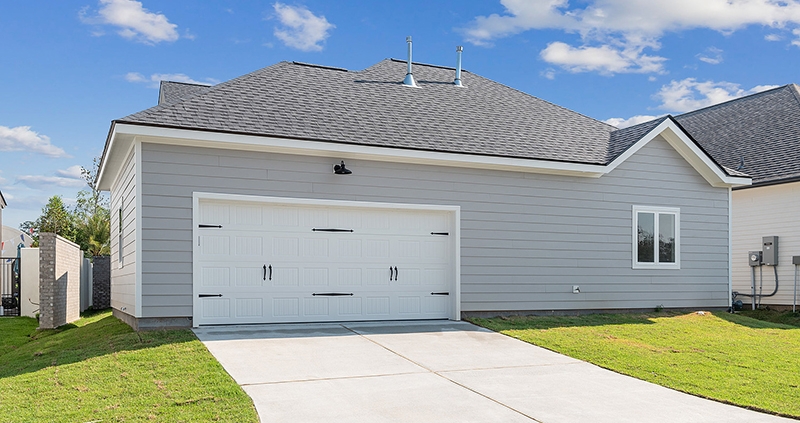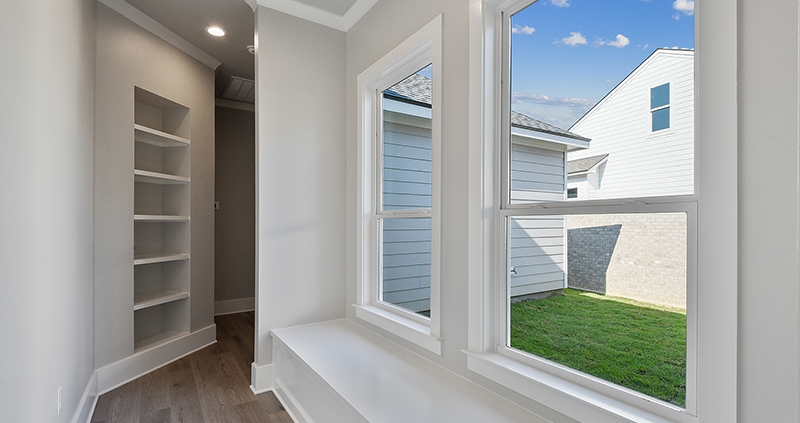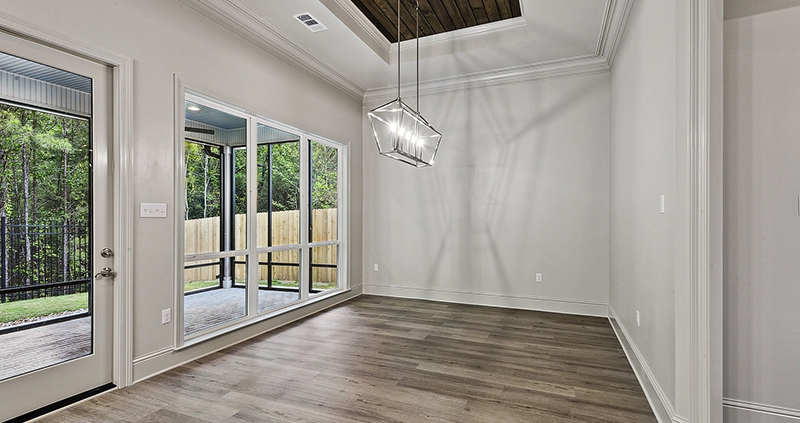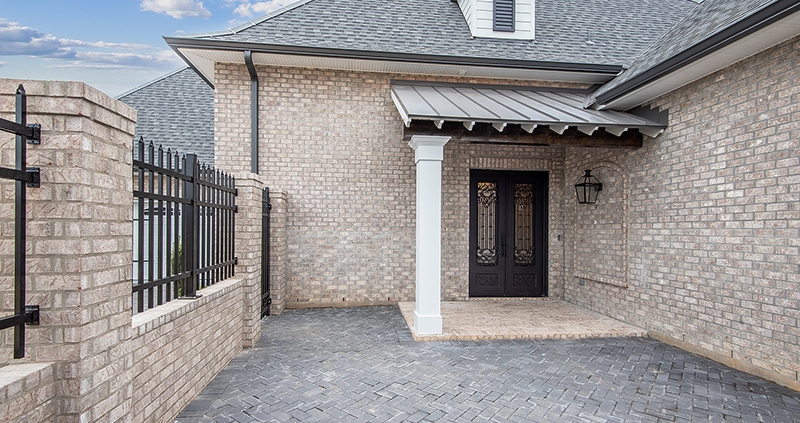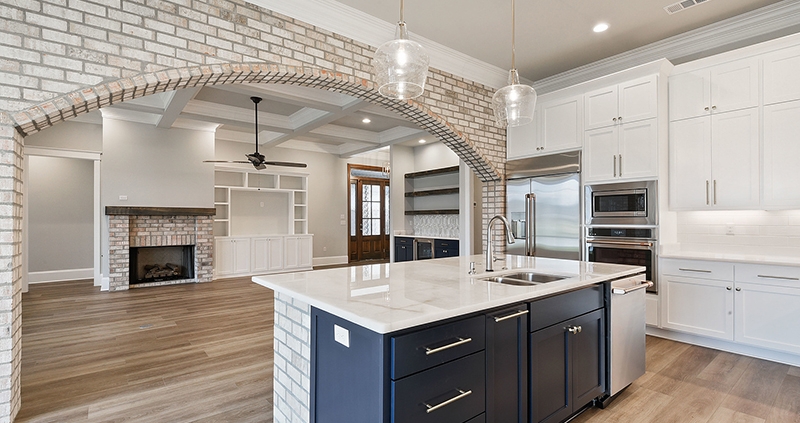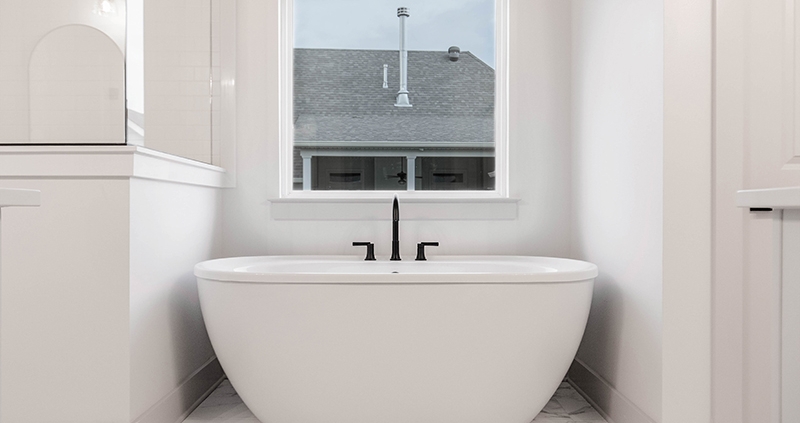Presented by the New Orleans Tourism and Cultural Fund (NOTCF), the Satchmo Summerfest will take place at the New Orleans Jazz Museum at the Old U.S. Mint.
Vapor barriers are an important part when it comes to building a home. Here is some science behind the reason why. 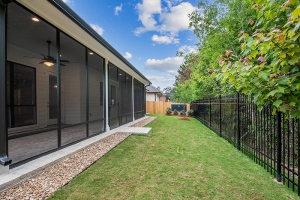
There are six sides of a new construction home which are in three categories, the walls, the roof and the foundation. All of these sides need to be protected from both liquid water and vapor water.
The side of every new construction home consists of a building envelope. This is where we want to keep moving such as liquid water, air, water vapor and thermal energy. There are several ways that water can sneak into your home. By liquid progress (wind-driven rain hitting up against walls), water vapor diffusion (movement of water vapor and its concentration level), and airflow (movement of air and its pressure levels).
A vapor barrier does not only need to block these areas but needs to also control the movement through them. This is done by using an air barrier (the material layer that will prevent the flow of air between air-conditioned air to unconditioned air), water-resistive barrier WRB (this material layer prevents liquid water from seeping into the house), waterproofing (this is a system that helps prevent and manage build liquid water infiltration), vapor retarder (a material layer that stops water vapor movement by diffusing it), insulation (the material layer that is used to help with the loss or gain of thermal energy).
So basically the goal is to keep your building’s envelope dry, efficient, comfortable and healthy. Remember there are different ways to control water, air, vapor and heat. Here are the reasons why, they all can move in or out of a home in both directions, they can move at different rates and degrees, and they can affect each other.
A new age-restricted community was approved called Sucette Harbor which will house 201-unit apartments, an events venue, restaurant, marina and an 82-room boutique hotel all along Mandeville’s lakefront. The Mandeville Planning and Zoning Commission approved the plans so now it will be up to the Mandeville City Council to say yes to the 55 and older development.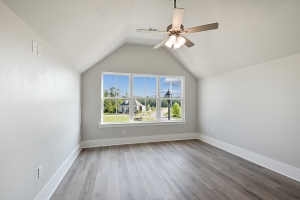
The land is being leased by Woodward Interests, who is the developer, from LSU Health Foundation. Al Copeland’s family dedicated the land to the LSU Health Foundation. The proceeds from the leased property will be split up with 60% going to cancer research and 40% going to scholarships.
Although the development will help with a good cause, residents in Mandeville have some questions and concerns. There is a concern out there that the development would attract enough older residents to the area that qualify to live in the age-restricted apartments. Another big concern is the traffic it will bring to the community and the removal of old southern oaks.
Many commission members are also concerned about the project. Claire Durio suggested reducing the size of the hotel but this was shot down. Mike Pierce also agrees that the project might be too big for the community calling Sucette Harbor an anomaly that doesn’t fit with the older surrounding neighborhoods and fails on compatibility.
Other commission members say the development will be an asset to the community. Nixon Adams feels that it is a better option than just leaving the land vacant. He says that the area needs a hotel because there is not one in the area. He also suggested the city bring a walking and biking path to the lakefront which will open up the lakefront.
It is a great adventure to take when it comes to building a new home. There are many exciting decisions to make on building materials, floorplans, etc. The home’s foundation is not one of the components that most homeowners want to think about. The foundation is what your home is literally built on and is the most critical part of the home-building process. Since you only get one chance to do it right, the professionals in the industry suggest asking your building these five questions. 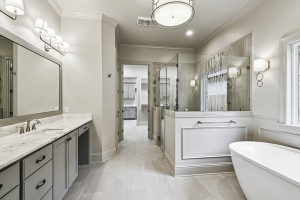
1. What type of foundation will I have for my home?
There are three foundation types to choose from, slab-on-grade, crawl space or basement. Some homes found around the country can have a combination of the types of foundations. The foundation of your home will be based on where you live, the climate, and the local soil and moisture conditions. If you live in a colder climate, then the frost line will be important to factor into your decision-making.
When determining the foundation type, your builder can use a geotechnical report to help with the decision on what foundation is best. A geotechnical report will provide the builder with soil data to ensure that the appropriate design is used. In all three options, moisture management is the key.
2. How will my home be protected from liquid water?
As mentioned before, moisture management is the key. The goal is to keep liquid water out of your home. Moisture seeping through into your home, can hurt the foundation, dampen your comfort level and cause a potential health problem. Water doesn’t just come from mother nature, in some climates bulk water pressure from a water table going up and down can cause problems as well as landscaping irrigation.
There are many ways your builder can design your foundation area and products they can use to help repel liquid moisture. There are different building codes in specific areas around the country. Your builder will be familiar with your areas’ minimum building code requirements. You will want to always make sure you have the proper grading around your home so that water never becomes a hindrance.
3. How will my home be protected from soil vapor?
Soil vapor can seep into any type of foundation in any location into a home’s envelope. The natural flow of water vapor is to move from greater concentration to lesser concentration called diffusion. Your foundation needs to be checked to make sure this is not happening. If it goes unchecked, it can lead to issues with floor coverings, coating failures, mold growth and overall poor indoor quality. It can also cause your HVAC system to not run properly.
Water vapor can be just as menacing as liquid water but protecting your home from water vapor is different from protecting your home from liquid water. Remember to ask your home builder what steps they will take to make sure there is no diffusion of water vapor under your home. Builders can use a water vapor barrier under a slab foundation or overexposed earth in a crawl space.
4. What about comfort and efficiency?
A home needs to be both comfortable to live in and energy efficient. Homeowners turn to solar panels, air conditioning and insulation to make a home more energy efficient. The comfort level in your home actually starts below the living space. If you live in a colder climate, then the home’s foundation will need to be insulated. Even if you live in a milder climate, having your foundation insulated can help maintain comfortable temperatures and keep utility bills down.
5. What products do you use?
Choosing the right products can make a huge impact. Choosing the correct foundation is a big deal because it is hard to replace a foundation once it is installed. If you do have to replace a foundation, it is very costly and can affect other systems throughout your home.
Builders know all the ends and outs of the foundation systems they use in their area. They can explain to you how they work and if they have a warranty or if your home buyer warranty package includes the foundation.
Remember the construction of the foundation of your home is very important. Talk with your builder and get familiar with the choices. Understanding what goes on with the foundation helps to give you peace of mind to know that everything is working as it should.
No matter if you are a first-time homebuyer or you this is one of many home purchases, it can be an exciting time. According to the National Association of Realtors, homeowners stay in their homes an average of 8 years before moving. Purchasing a home is a long term investment, and you should take a moment to ask yourself these questions before making the purchase.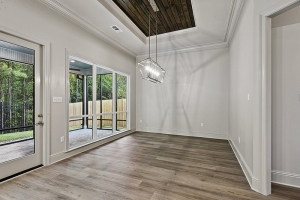
1. What can I comfortably afford?
When you are considering what is comfortable for you to spend each month, this doesn’t just include your mortgage payment, but other home’s expenses as well. These additional expenses include taxes, homeowner’s insurance, homeowner’s association dues, utility cost and maintenance. A good rule to follow is to make sure that all your expenses which include your total house payment, taxes and insurance should be below28% of your gross monthly income.
2. Which loans do I qualify for?
In order to figure this out, you will need to already have a lender. Your lender can go through all of the options and help you weigh the pros and cons of each. For example, if you want to have a monthly payment that stays the same, you would want to go with a conventional fixed-rate mortgage.
3. How much will you need for your down payment?
A lender can help factor what kind of loans you will qualify for which in turn will determine your down payment. A VA loan requires a low down payment and in some circumstances no down payment at all. Other loans such as a conventional loan like to have a 20% of the home’s purchase price as a downpayment. On some loans, a higher down payment can lower your monthly payments and your interest rate.
4. What’s PMI? Do I have to pay it?
PMI is also known as private mortgage insurance and is required on many loans if the down payment is less than 20% of the home’s sale price. For example, if you do obtain a conventional loan and put less than 20% down, you will also have to pay PMI. Once you pay your loan down, your PMI can come off.
5. What interest rate do I qualify for? How can I lower it?
Your mortgage interest rate is very important in the life of your loan as it has a direct impact on your monthly payment. When you are shopping around for a lender, compare their APR (annual percentage rate) and their lender fees. Once you have chosen a lender, they can help you with ways to lower your interest rate.
6. What will my monthly payment be?
A lender can estimate your monthly payment based on the purchase price of a home, your down payment and your interest rate. There are also tons of monthly mortgage payment calculators online that can help you with a ballpark figure of how much you will pay a month.
7. What are the closing costs?
Closing costs include origination fees, discount points, appraisal, document preparation, title insurance, and home inspection. Closing costs run anywhere from 2% to 5% of your loan amount. Before you close on your home, your lender will provide you with an itemized list of estimated closing costs.
8. How long will the closing process take?
You want to make sure to give yourself enough time to get your financing in order, so put a reasonable closing date on your offer. Obtaining financing and getting everything in order for your home to close can take between 30 to 60 days.
If you are in the market for a new home, now is a great time to ask a real estate agent for their expertise. They can not only help you with the home buying process, but will also be able to direct to a good lender.
Mortgage rates and home prices let up a bit at the beginning of 2023 causing the new home sales to rise from December 2022 to January 2023. New construction home sales rose 7.2% in January 2023 from December 2022. According to the US Department of Housing and Urban Development and the US Census Bureau this is still down 19.4% from the same time last year. Industry leaders are beginning to see that the housing market is stabilizing. 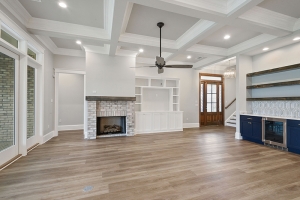
New single-family houses were at a seasonally adjusted annual rate of 625,000 at the end of 2022, and shot up to 670,000 in January 2023. This still does not come close to the record sales pace in March 2022 which was a rate of 831,000.
Prices of new homes are starting to slow down. The median price for a new home was $465,500 in December 2022 and fell in January 2023 to $427,500. This is .7% lower than it was the same time a year ago which came in at $430,500.
“New home sales prices dropped precipitously in January to the lowest median price since February of last year. While sales are still depressed from a year ago, this shows another crack in the housing market that should benefit potential homebuyers, especially when mortgage rates drop,” says Robert Frick, corporate economist at Navy Federal Credit Union.
The existing home inventory is still low, so the new construction home listings are filling the gap according to Kelly Mangold of RCLCO. Builders are being flexible with the prices which make it a bit harder for buyers to find homes on the market to purchase. This coupled with the up and down mortgage rates has not made the market easier for buyers.
“Price adjustments and builder incentives helped to push the sales pace in a positive direction. January had the lowest level of existing home sales in over a decade-and motivated buyers are increasingly seeking new homes because there is limited resale inventory available,” says Mangold.
“Mortgage rates are spooking sellers looking to upgrade when they calculate the potential increase in their monthly payments, and the hesitation to put existing homes on the market is allowing new construction homes to have less competition,” explains Mangold.
Come celebrate Louisiana’s culture in Bayou St. John.
Mid-City Bayou Boogaloo
When: May 21, 2023
Where: Bayou St. John
New Orleans, LA
What: Click Here For Music Line Up
There is a VIP pass called the Canopy Club at the festival in Bayou St. John.
Mid-City Bayou Boogaloo
When: May 20, 2023
Where: Bayou St. John
New Orleans, LA
What: Click Here For Music Line Up
A fun safe festival for everyone in Bayou St. John.
Mid-City Bayou Boogaloo
When: May 19, 2023
Where: Bayou St. John
New Orleans, LA
What: Click Here For Music Line Up
The Federal Housing Finance Agency will have new guidelines for credit score models for lenders. These new guidelines will have a positive impact on many that were not approved for a loan in the past. Freddie Mac and Fannie Mae will be given the new guidelines to follow when determining if they can accept a mortgage from a lender. 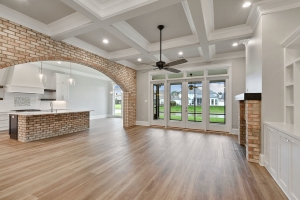

Money is freed up by Freddie Mac and Fannie Mae when the agencies purchase mortgages from lenders. The lenders will then have more money freed to make home loans. Currently, Freddie Mac and Fannie Mae can only purchase conventional loans that meet certain criteria. These scores and criteria are determined by FHFA and mortgage lenders have been using FICO scores 2, 4, and 5 (these are considered outdated models).
“The mortgage industry didn’t have a choice in the matter. They were essentially forced to use older FICO scores by the FHFA. All other types of lenders have long since moved on from those legacy scoring models,” explains credit expert John Ulzheimer.
Under the new guidelines, lenders can use more up-to-date FICO scores, FICO 10T, and VantageScore. VantageScore is FICO’s direct competitor. Lenders will now only have to proved credit reports for two of the three major credit bureaus. FICO 10T and VantageScore being picked up by the new guidelines is the biggest change in a positive way.
These two sources will gather data from more sources included payments for rent, utilities or cell phone service. VantageScore also requires a shorter credit history, FICO has a six month-minimum for credit history. The source also has scores that show up for 37 million Americans that do not show up under FICO. Surprisingly these that show up only on VantageScore, more than 13 million have a credit score above 620.
Using the updated credit score modeling will also help with the racial homeownership gap. According to the Urban Institute around 53 million Americans do not have FICO scores (when using the older scoring models). Out of these 53 million, 29.5% of Black households and 27.3% of Hispanic households compared to only 16.7% of white households.
If you are in the market for a new home, check with lenders to see when you can take advantage of this updated policy. Meanwhile, choose a Realtor who can help you with the homebuying process.


